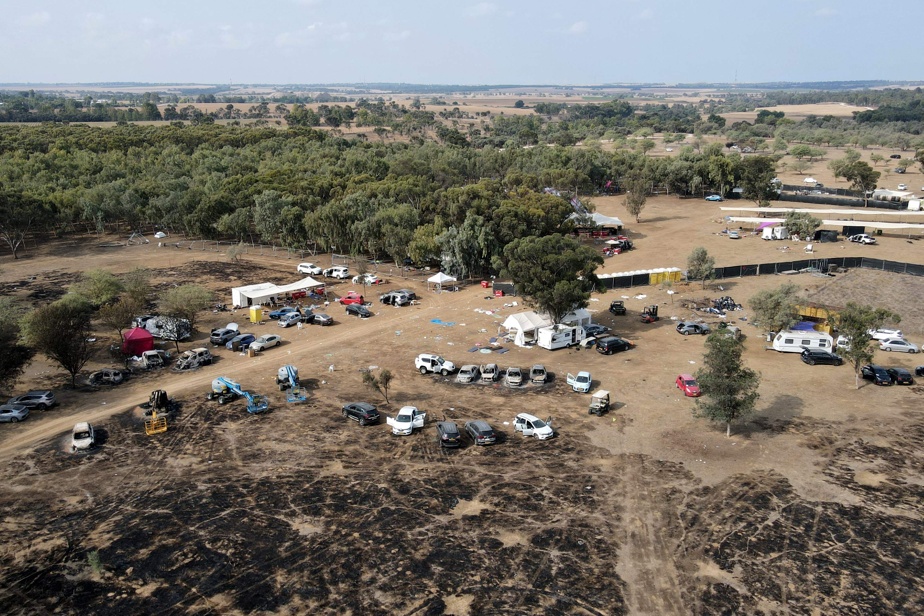(Bet Shemesh) Israeli police announced Tuesday that they were investigating sexual violence, including rape and mutilation, suspected of having been committed against women by Hamas fighters on October 7, an investigation that promises to be long and delicate. .
That day, Hamas commandos infiltrated southern Israel from the Gaza Strip, controlled by the Palestinian Islamist movement, carrying out attacks on civilians on a scale and violence unprecedented since the creation of Israel in 1948. Around 1,200 people were killed, mostly civilians, according to authorities.
David Katz, one of the heads of the Lahav 443 criminal police unit, announced that he was “working on several cases” of sexual assault and collecting forensic clues from survivors, CCTV footage and information given during interrogations of Palestinian fighters arrested after the massacre.
” This survey […] is the most important in our history,” said Israel’s Chief Commissioner Yaakov Shabtai.
According to legal specialists interviewed by AFP, the attacks of October 7 are likely to constitute war crimes which, as defined in the 1998 Rome Statute which established the International Criminal Court (ICC), include rape.
The police presented to the international press some documents serving as a basis for this investigation which will take “several months”, according to Mr. Katz.
A photo taken at the site of the rave in Reim (south), targeted by one of the attacks, shows the body of a woman with her lower body naked, lying on the ground on her back, her legs apart and showing traces of burns. to the waist and limbs.
Another photo shows a naked woman, legs spread, her panties pulled down.
The police again showed the filmed interview of a survivor of the rave massacre.
The young woman, “S.”, describes seeing a woman being raped by several men: “they held her by the hair. A man shot her in the head while he was raping her,” she said.
DNA, photos
“The vast majority of victims of the rapes and other sexual assaults of October 7, including genital mutilation, were murdered and will never be able to testify,” says Cochav Elkayam Levy, president of the parliamentary commission on crimes committed against women on October 7. october.
Dean Elsdunne, spokesperson for the Israeli police, assures that forensic examinations were carried out in “the combat zone” itself, on “bodies recovered” and then taken to the Shura military base, in the center of ‘Israel.
” We know […] based on the bodies we saw on the ground, that there were rapes and sexual assaults,” he told reporters.
“We gathered visual clues, DNA evidence, we took detailed photos of the bodies,” when they arrived in Shura, although not all of them could undergo an autopsy and search for the bodies. causes of death.
Of the 1,200 bodies recorded, “hundreds” were in a very degraded state, according to the police. From the first week, testimonies from Zaka rescuers, among the very first on the scene, mentioned rapes.
At the Shura body identification center, Doctor Alon Oz, in charge of the remains of the “hundreds of soldiers” who were also among the victims of October 7, declared having seen “burned women with their hands and feet shackled” .
” I saw some [impacts de] shots on private parts […] a missing head and missing limbs,” he said.
“Broken pelvises”
Another responder, in charge of the mortuary toilet and who asked to be identified only as Sherry, indicated that some soldiers had “underwear full of blood”.
“Others on the team saw broken pelvises, legs and pelvises,” she added.
When Hamas fighters blew up the Erez border crossing between Israel and the Gaza Strip, they quickly arrived at an Israeli military base dedicated to guarding the border, a function performed only by female soldiers.
Several women were kidnapped there, according to testimonies from survivors.
One of them quickly appeared in a video released by Hamas, pulled by her hair from the back of a vehicle in Gaza, with injuries to her ankles and her pants stained red on the back.
At this stage, investigator David Katz says he cannot establish that Hamas had given instructions to rape women, but, he assures, “nothing was done randomly.”
The parents of hostages, at least 80 out of 240 of whom are women and girls according to an AFP count, tremble at the idea that sexual violence could be committed against their loved ones during their detention.
The images that have gone viral of Israeli-German Shany Louk, 22, who appeared with her upper body naked and being manhandled by men in the back of a pick-up in Gaza, have created a climate of anxiety. The death of the young woman, who participated in the rave, was confirmed by Israeli authorities in October.
In hospitals likely to accommodate released hostages, a protocol has already been put in place. It was designed by feminist and victim support associations who raised awareness among all staff about attentive care.
